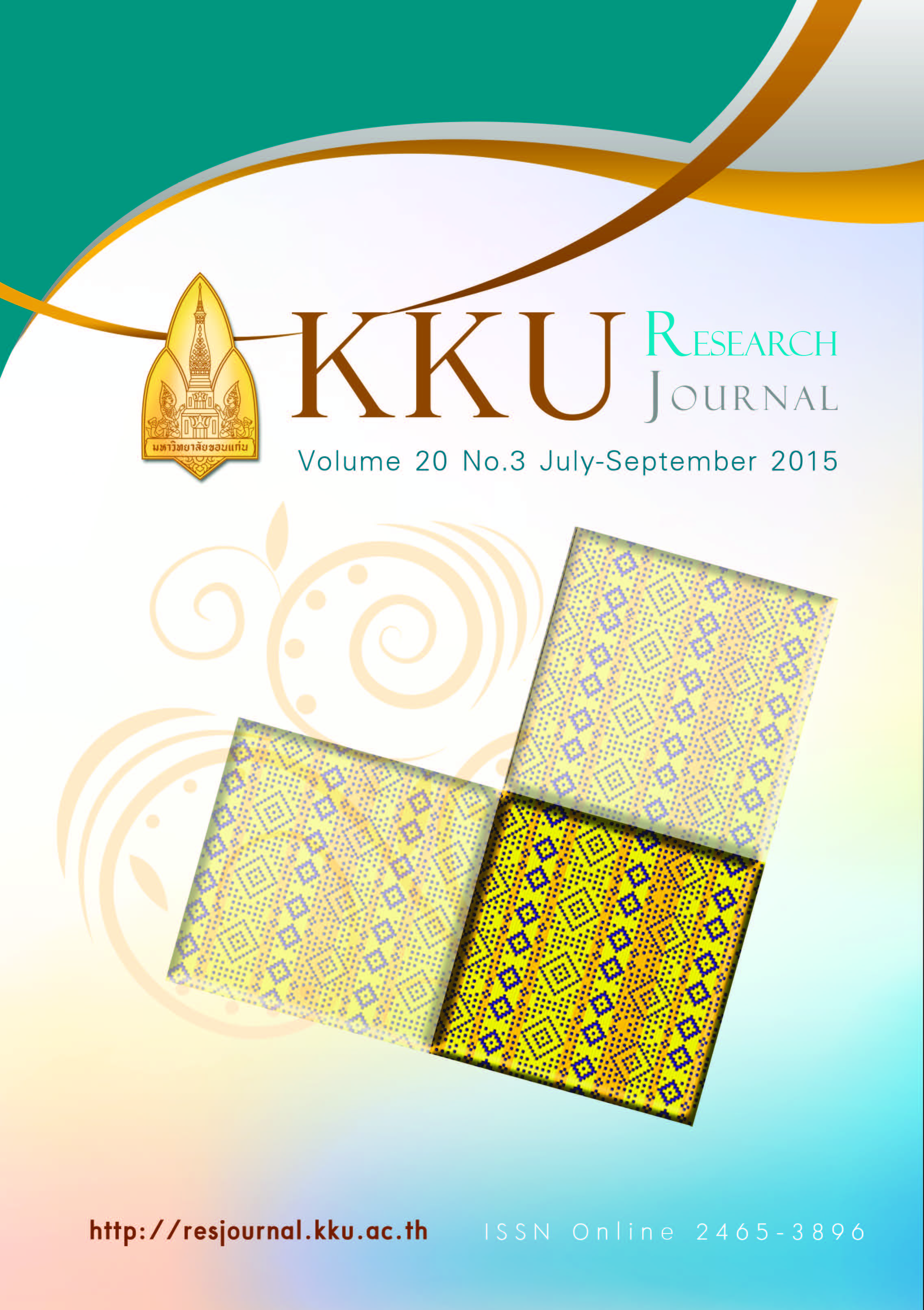Impact of integrated organic farming practice on health of people in Ubolratana district, Khon Kaen province
Main Article Content
Abstract
Objectives: To explore the physical health, psychosocial health (time for the family, interaction with the community and generosity among the community), family finance (savings, household debt and expenditure on food), agricultural land and happiness of Ubolratana community-dwellers.
Methods: Participants were 2,500 residents of Ubolratana District, Khon Kaen Province, who participated in a 3-day integrated organic farming training course during 2007-2009. By using an interview form, the participants were asked to compare their psychosocial health, family finance and the quality of their agricultural land at the study time with those at the pre-training period. Furthermore, they were interviewed about their perception of physical health condition within the past year. Their level of happiness was evaluated by using a numeric rating scale (1-10). Descriptive statistics, Chi-square test and T-test were applied for data analysis.
Results: Of the 2,500 participants, 1,695 (67.8%) were practicing integrated organic farming (IF group). The rest of them (non-IF group) did not currently practice because of the lack of their own land, sources of water or time. The number of IF participants who perceived themselves as having good physical health within the past year was significantly greater than that of the non-IF participants (79.6% vs. 70.4%, p<0.001). Positive findings in psychosocial health, family finance and quality of agricultural land were also significantly greater in the IF group than in the non-IF group. The self-reported level of happiness was higher in the IF group than in the non-IF group (7.51.9 vs. 5.31.0, p<0.001).
Conclusion: Community-dwellers could benefit from integrated organic farming practice in aspects of their physical and psychosocial health as well as family finance, thereby increasing personal happiness.
Article Details
References
[2] Bureau of Policy and Strategy, Ministry of Public Health. Thailand Health Profile 2005-2007. Bangkok:The War Veterans Organization of Thailand; 2007. Thai.
[3] Information and Communication Technology Center, Ministry of Public Health. Population of Ubolratana District, Khon Kaen Province [Internet]. 2013 [cited 2014 Mar 25]. Available from: https://provis.kkpho.go.th/provis/population/popsubdist_ agegroup_dbpop.php?distid=4008&popyear=2013. Thai.
[4] Ubolratana Hospital. Performance of the organization 2008-2010 [Internet]. 2011 [cited 2013 July 14]. Available from: https://www.ubrh.org. Thai.
[5] Taechasubamorn P, Nopkesorn T, Pannarunothai S. Prevalence of low back pain among rice farmers in a rural community in Thailand. J Med Assoc Thai. 2011;94(5):616-21.
[6] Ngamkamol K. Health status and occupational safety behaviors among rice farmers [dissertation]. Chiang Mai: The Graduate School, Chiang Mai University; 2009. Thai.
[7] Thailand Pesticide Alert Network. The effects of pesticides on health of Thai people [Internet]. 2011 [cited 2015 June 10]. Available from: https://www.biothai.net/ sites/default/files/BriefingPesticide-HEALTH.pdf. Thai.
[8] Tawatsin A. Pesticides used in Thailand and toxic effects to human health. Medical Research Archives [Internet]. 2015 [cited 2015 June 9]. Available from: https://www.jour-nals.ke-i.org/ojs3/index.php/mra/article/view/176.(9)Chaipattana Foundation. Philosophy of Sufficiency Economy [Internet]. 2012 [cited 2013 July 14]. Available from: https://www.chaipat.or.th/chaipat_english/index.php.
[10] Raeburn J, Akerman M, Chuengsa-tiansup K, Mejia F, Oladepo O. Community capacity building and health promotion in a globalized world. Health Promot Int. 2006;21(S1): 84-90.
[11] Hollen PJ, Gralla RJ, Kris MG, McCoy S, Donaldson GW, Moinpour CM. A comparison of visual analogue and numerical rating scale formats for the Lung Cancer Symptom Scale (LCSS): does format affect patient ratings of symptoms and quality of life? Quality Life Res. 2005;14(3):837-47.
[12] Joos E, Peretz A, Beguin S, Famaey JP. Reliability and reproducibility of visual analogue scale and numeric rating scale for therapeutic evaluation of pain in rheumatic patients. J Rheumatol. 1991;18(8):1269-70.
[13] Serlin RC, Mendoza TR, Nakamura Y, Edwards KR, Cleeland CS. When is cancer pain mild, moderate or severe: grading pain severity by its interference with function. Pain. 1995;61(2):277-84.
[14] Government Public Relations Department. King Bhumibol’s Philosophy of Sufficiency Economy for the Thai Nation [Internet]. 2012 [cited 2013 July 14]. Available from: https://thailand.prd.go.th/view_news.php?id=6290&a=4.(15)Chaipattana Foundation. New Theory: His Majesty’s guideline on integrated farming practice on the Chaipattana Foundation’s land, Wandao Subdistrict, Pak Tor District, Ratchaburi Province [Internet]. 2012 [cited 2013 July 14]. Available from: https://www.chaipat.or.th/chaipat_old/journal/apr01/eng/e4.html.
[16] Carpenter C, Forwell SJ, Jongbloed LE, Backman CL. Community participation after spinal cord injury. Arch Phys Med Rehabil. 2007;88(4):427-33.
[17] World Health Organization. Ottawa Charter for Health Promotion [Internet]. 1986 [cited 2014 Dec 9]. Available from: https://www.euro.who.int/en/publications/policy-documents/ottawa-charter-for-health-promotion,-1986.


